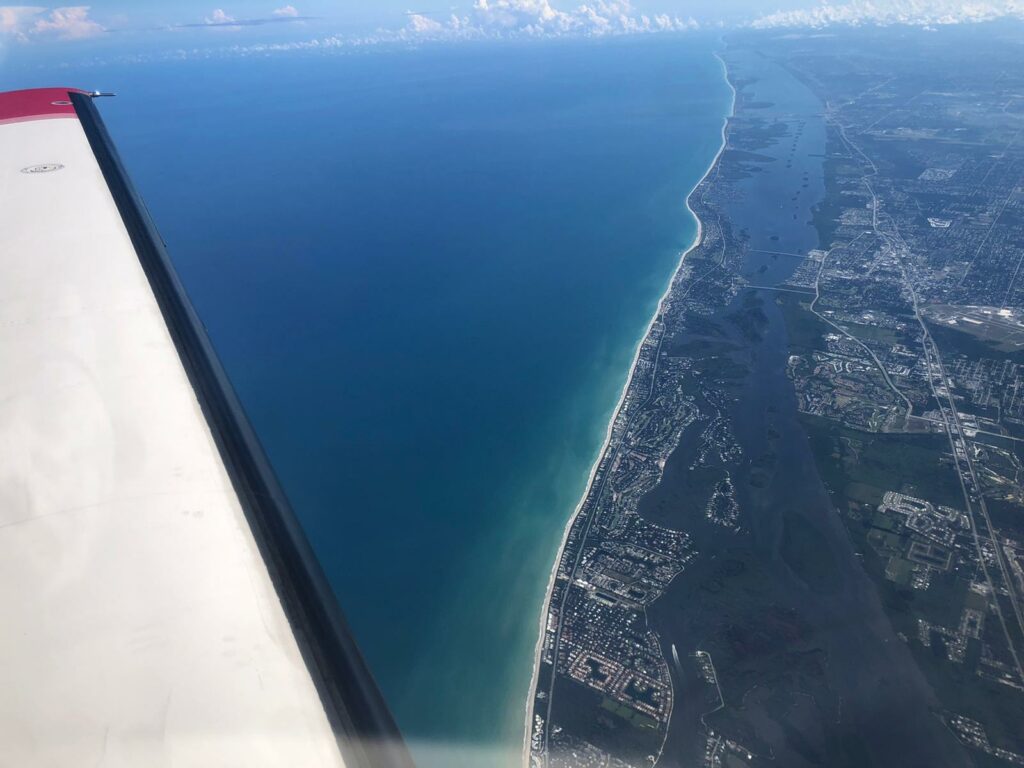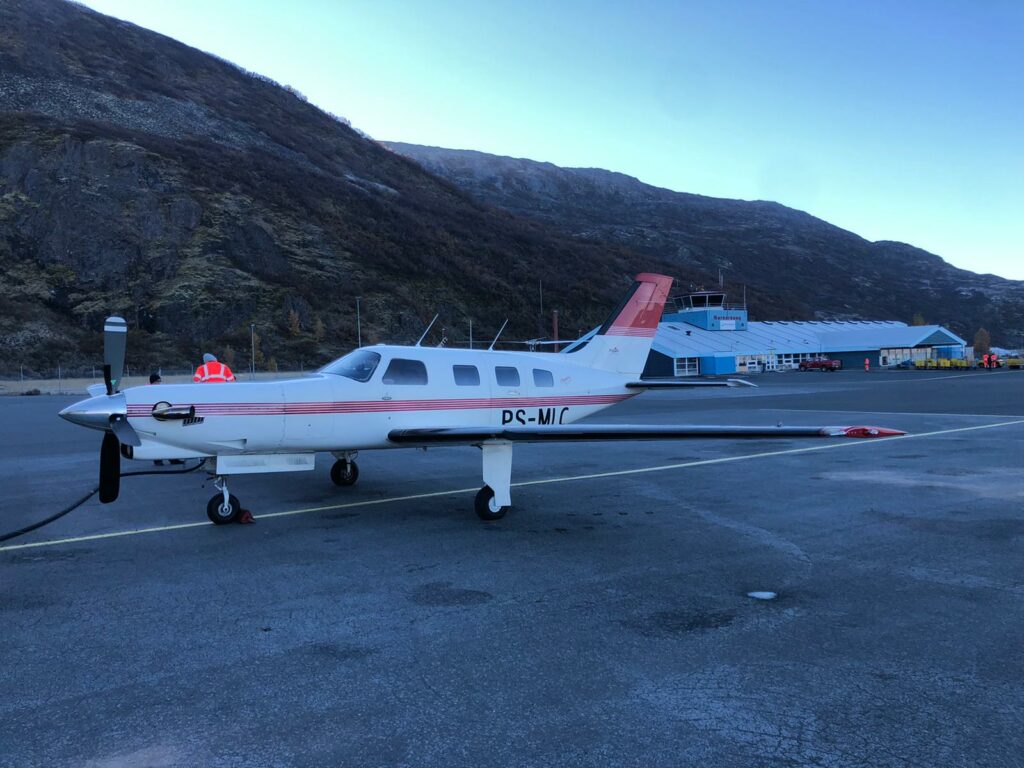By Vincent Wigmans
A ferry flight is the specialized transport of an aircraft, primarily undertaken to reposition it without passengers or commercial cargo. This crucial operation is typically performed for various reasons, including delivering a newly purchased aircraft to its owner, returning an aircraft to its home base, or moving it for maintenance and repairs. A ferry flight is an important task of any aircraft sale or purchase. How this works and the difficulties you run in to, we explain it in our blog.
The global nature of aircraft sales means that ferry flights are an indispensable part of any aircraft acquisition or sale. On a daily basis, aircraft are ferried across continents, facing unique challenges and requiring meticulous planning. At FA Aircraft Sales, we specialize in navigating these complexities to ensure a seamless transition for your aircraft.
Beyond the common definition, ferry flights encompass several specific scenarios:
- Delivery Flights: Transporting an aircraft from the manufacturer to the end customer, or from one owner to another. These flights typically occur without passengers.
- Repositioning Flights: An aircraft is flown to a specific location to prepare for a subsequent commercial flight with a customer.
- Repossession Flights: In cases of financial default, a bank or finance company may order a specialized company to perform a repossession flight to seize and move the aircraft.
Strategic Ferry Flight Routes
Successful ferry flights hinge on meticulous planning, especially for intercontinental transfers. The majority of our ferry flights are conducted between Europe and the United States, utilizing the Northern flight route. This route strategically incorporates stopovers in key locations such as Wick (Great Britain), Reykjavik or Keflavik (Iceland), Narsarsuaq (Greenland), Goose Bay (Canada), and Iqaluit (Canada), before continuing into the US. The exact stopover points depend on the aircraft’s endurance.

We have successfully executed complex ferry flight scenarios, including:
- EU to US
- EU to Australia
- EU to Brazil
For transatlantic routes, multiple stops are often necessary in locations like UK, Iceland, Greenland, Canada, and USA. Wick, Scotland, is a frequent starting point where crews often acquire essential survival equipment, such as immersion suits and survival rafts, which are then left at the destination for return ferry flights. Due to unpredictable weather, especially in winter, exact schedules are challenging to maintain, as wind, rain, or ice can necessitate unplanned stops.
Expert Ferry Pilots and Extensive Experience
Ferry flights inherently carry a higher risk due to the challenging conditions often encountered, including diverse weather patterns and extensive overwater segments. Therefore, these missions demand highly experienced professionals. Our dedicated ferry pilots possess a minimum of 1500 hours Pilot In Command (PIC), along with a Commercial Pilot License (CPL/IR/ME) and at least 50 hours on type. Their extensive experience includes numerous transatlantic crossings, navigating the harsh environments these routes sometimes present.
Safety and Insurance Considerations
The inherent risks of ferry flights necessitate strict safety protocols. Dedicated ferry pilots are acutely aware of these risks and are equipped with essential survival gear, including immersion suits, survival rafts, updated navigation databases, and EPIRBs. We also recommend installing an extra flight tracking system for real-time monitoring of the aircraft’s journey.
Ferry-Flight Insurance is a critical, yet complex, aspect. While a pilot might be named on the policy, standard coverages often exclude liability to occupants during the ferry flight in specific regions (e.g., Europe, UK, USA). To mitigate this, it is crucial for the pilot’s company to be listed as ‘Additionally Insured’ specifically for third-party liabilities, ensuring protection should persons or property on the ground be affected. Insurers also impose stringent pilot experience requirements, often demanding a minimum of 500 fixed-wing piston engine hours, five prior North Atlantic route crossings on similar aircraft, a clean claims history for the past five years, and an age limit of 80. An addendum to the standard insurance policy is often necessary to address these unique risks.

Essential Documentation and Aircraft Preparedness
For a successful ferry flight, the following documentation must be meticulously in place:
- Certificate of Airworthiness
- Certificate of Registration or Fly-Wire
- Radio Station Licence
- Weight and Balance
- Noise Certificate (if applicable)
- Insurance (including the ferry pilot’s company as Additionally Insured for 3rd Party Liabilities)
- Bill of Sale
- Maintenance Certificate of Release to Service
- Confirmation that the VHF radios have “8.33 Spacing”
- Confirmation that the aircraft is ‘ADSB Out” compliant (waivers can be filed if not, but may incur additional costs for airspace avoidance).
To ensure a smooth hand-over and flight, the client is responsible for preparing the aircraft and providing necessary support:
- The aircraft must be released to the Ferry Pilot with full fuel and oil at the departure airport.
- It must be free and clear of any bills (handling, maintenance, etc.) at the point of origin.
- Export/entry processes must be completed where applicable.
- A current GPS database covering the entire route must be installed.
- VHF radios must have ‘8.33 spacing’ confirmed.
- ADSB Out compliance must be confirmed.
- The Ferry Pilot must be listed on the insurance cover as additionally insured for liabilities.
- It is understood that the Ferry Pilot’s financial liability begins at wheels lift-off at departure and ceases upon reaching the destination.
- The recipient party is responsible for all charges incurred after the aircraft reaches its destination.
- A letter from the owner approving the ferry pilot to collect the plane and act as pilot in command is required.
Conversely, the Ferry Pilot is mostly responsible for the following expenses:
- ATC (Air Navigation Charges)
- En-Route fuel after the departure point
- Any overflight and/or landing permits, save for the final country of destination.
- Landing, parking, handling, and airport fees, excluding any charges incurred after reaching the destination.
- Ground transportation for the crew.
- Crew business class repositioning costs, airfares, etc.
- Jeppesen airways maps and airport approach charts.
- All applicable flight planning and logistics.
- Provision and repatriation of survival equipment.
Beyond the initial sale, getting your newly acquired aircraft to its home base requires specialized expertise. This is where delivery flights become crucial, and at FA Aircraft Sales, we offer a comprehensive ferry flights service to ensure a seamless transition. Learn more about our detailed process and how we can facilitate your aircraft’s journey on our dedicated delivery and ferry flights service page. Our experienced pilots and dedicated logistics team handle every detail, from route planning and international permits to fuel stops and real-time tracking, allowing you to focus on preparing for your aircraft’s arrival.
If you’ve purchased an aircraft internationally and require assistance with its ferry flight, don’t hesitate to reach out! Contact us at sales@faaircraftsales.com. We’ll coordinate all aspects of the flight with you and the ferry pilot, including handling necessary customs clearances